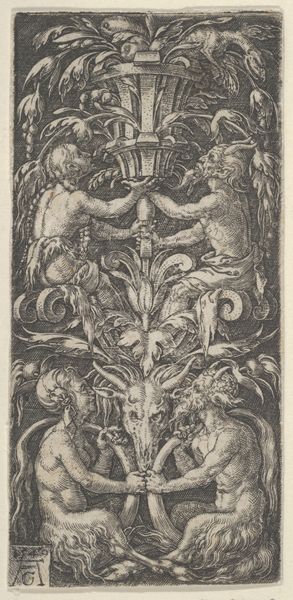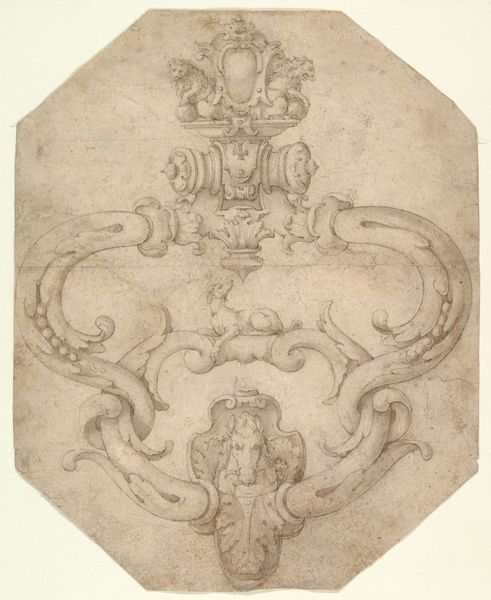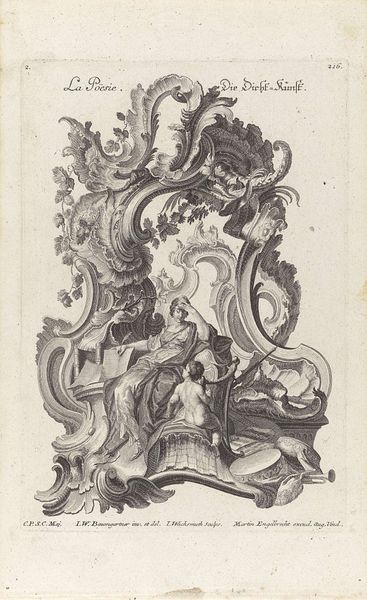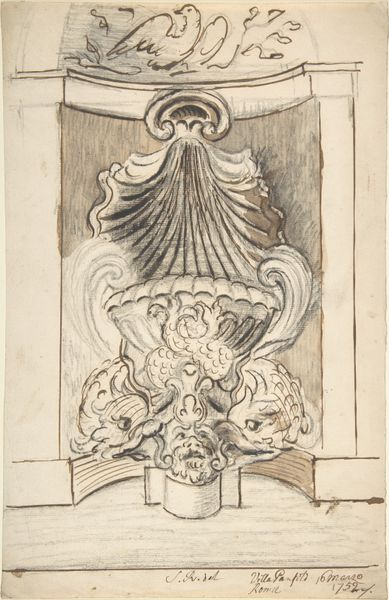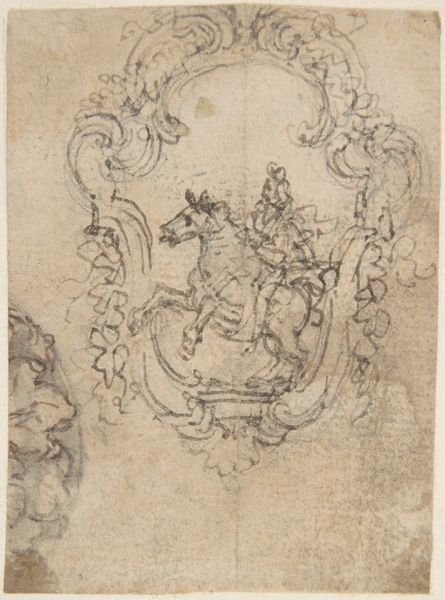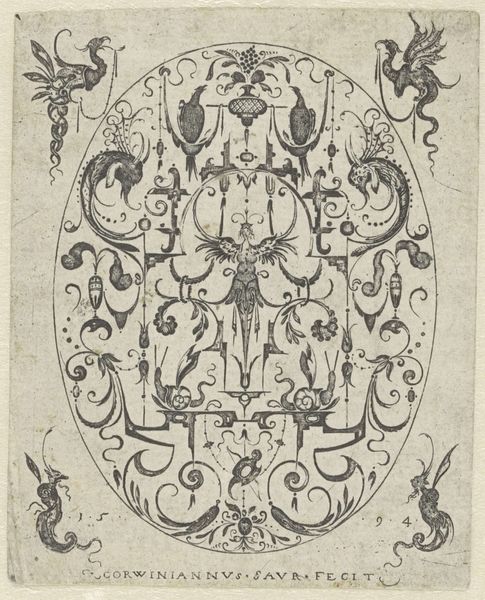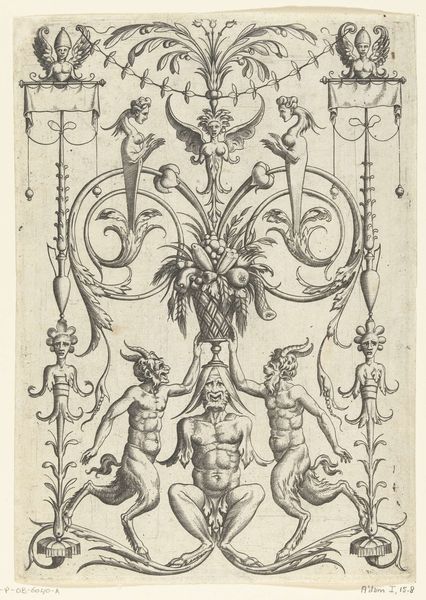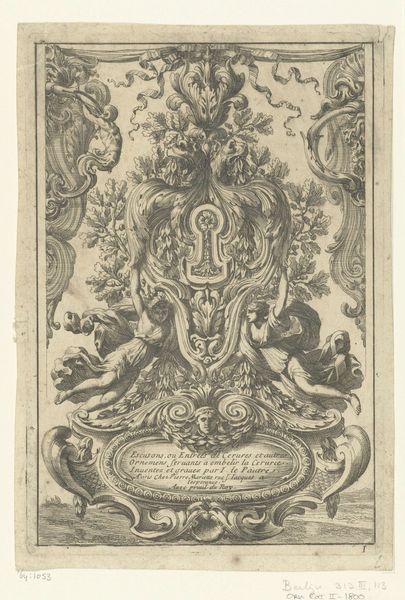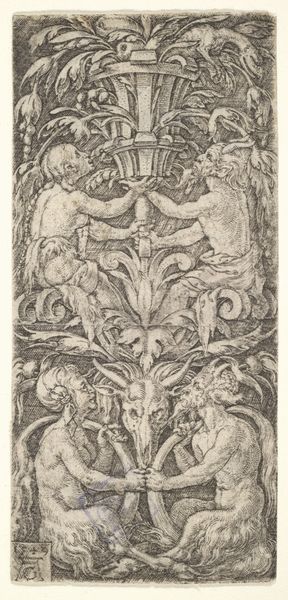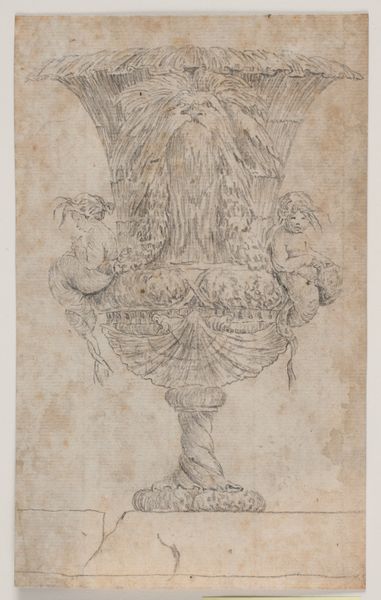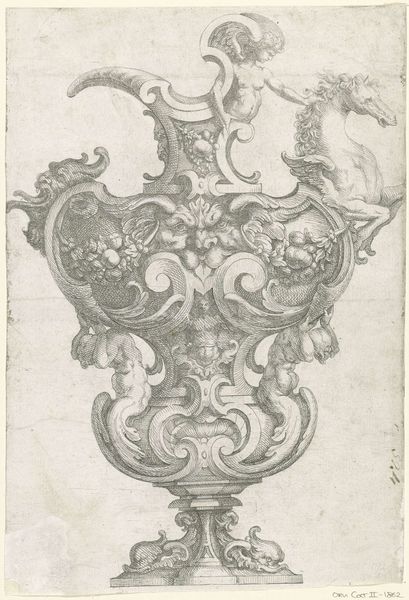![Design for a Coat of Arms with Two Dragons and Initials [?] in center (recto); Three Constructed Circles with Inscriptions (verso) by Anonymous](/_next/image?url=https%3A%2F%2Fd2w8kbdekdi1gv.cloudfront.net%2FeyJidWNrZXQiOiAiYXJ0ZXJhLWltYWdlcy1idWNrZXQiLCAia2V5IjogImFydHdvcmtzLzQyZTIxNjBjLWMyN2YtNDUyOS1hN2NkLTI3MGM1NDhkOGVjYi80MmUyMTYwYy1jMjdmLTQ1MjktYTdjZC0yNzBjNTQ4ZDhlY2JfZnVsbC5qcGciLCAiZWRpdHMiOiB7InJlc2l6ZSI6IHsid2lkdGgiOiAxOTIwLCAiaGVpZ2h0IjogMTkyMCwgImZpdCI6ICJpbnNpZGUifX19&w=3840&q=75)
Design for a Coat of Arms with Two Dragons and Initials [?] in center (recto); Three Constructed Circles with Inscriptions (verso) 1700 - 1780
0:00
0:00
drawing, ink, pen
#
drawing
#
baroque
#
pen drawing
#
ink
#
pen
Dimensions: 7-3/16 x 4-5/8 in. (18.3 x 11.7 cm)
Copyright: Public Domain
Curator: Here at the Met we have an intriguing design from between 1700 and 1780. Attributed to an anonymous artist, it’s a pen and ink drawing titled "Design for a Coat of Arms with Two Dragons and Initials [?] in center." Editor: It feels like a furious explosion of lines barely contained. The eye jumps from one flourish to another, almost dizzying in its detail. The symmetry gives it a sense of order, but the chaotic energy dominates. Curator: Indeed, a Baroque characteristic! These heraldic emblems spoke volumes about status, family lineage, and power, serving as visual declarations of identity. Two dragons support a central shield marked with unidentifiable initials—likely a personalized symbol. Editor: Those dragons... they're not the imposing, fearsome creatures of legend. They appear rather decorative, almost whimsical. Are they more symbolic than representative of brute strength? Curator: Precisely! Their inclusion may signal qualities desired by or associated with the family, such as wisdom, protection, or valor, rendered here in an elite, idealized visual language. Consider the use of symmetry, repetition, and swirling lines, designed to resonate deeply within a hierarchical social structure. Editor: But look at the varying line weights and textures achieved simply through pen and ink! The cross-hatching creates such depth. It is, without doubt, aesthetically very satisfying. It manages to be intricate without losing its overall shape. Curator: And the very act of creating such an elaborate design, irrespective of whether it was ever fully realized, speaks to the cultural currency of symbols of power at this historical moment. Editor: A fascinating object lesson in line and form, speaking across the centuries. Curator: It underscores how heraldry intersects with larger socio-political narratives.
Comments
No comments
Be the first to comment and join the conversation on the ultimate creative platform.

